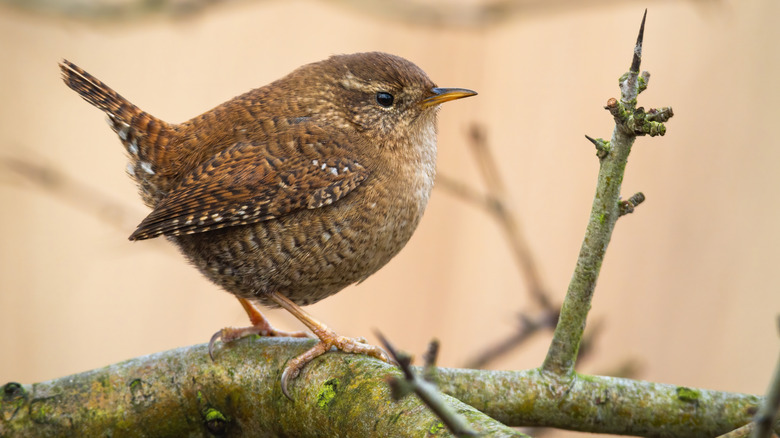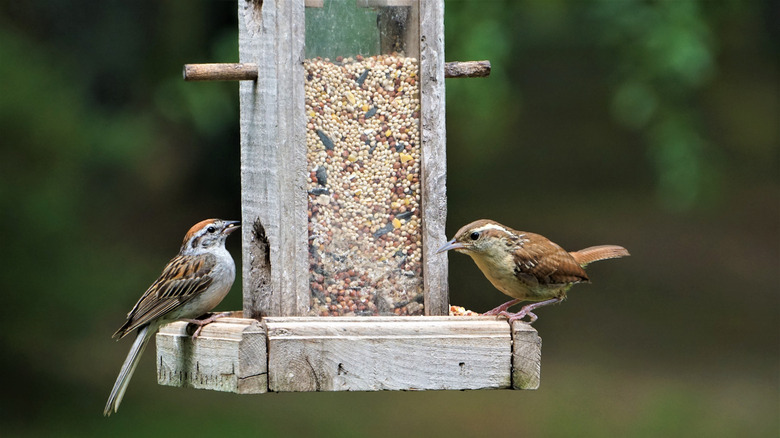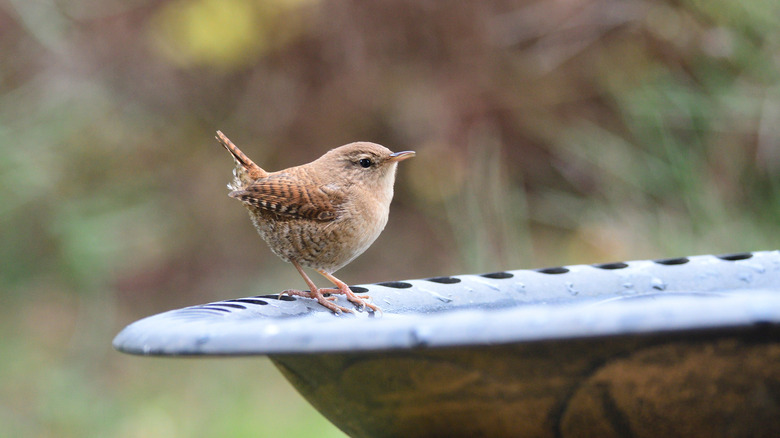The Best Types Of Wren Bird Feeders To Help Keep Pests Out Of Your Garden
Every year as spring sets in, there are a number of wildlife friends we look forward to having back in our gardens. Some of which are the sweet singing wren birds that hop around our yards and are overly friendly. These small brown and plump birds are all over the Western Hemisphere and enjoy various garden activities like nest making, bird baths, and bird feeders. Wrens love all different types of bird feed, from crickets and mealworms to peanuts and sunflower seeds.
Wren birds also love to scoop up all our unwanted garden pests, like slugs and snails, spiders, grubs, beetles, and ants. Choosing the best bird feeders for little wren birds will have them flock to your property and greatly benefit your garden. Overall, they aren't too picky about the type of feeders you present to them. However, different feeders will better suit their food preferences and be easier to manage. Additionally, you'll want to ensure they have a safe and sturdy place to let down their guard and munch away.
Best feeders for wren birds
Wren birds aren't overly particular about which bird feeders they eat from; the most important thing is to have something accessible, safe, and clean for them to use. You'll also want to be sure that regardless of which type you choose that they have at least a 1 ½ inch opening. The three frequently preferred types are tray/dish feeders, hoppers, and tube feeders. Tray and dishes are very accessible for wrens, and considering the bird's small size, you'll likely have quite a few eating at a time. On the downside, the feeders have little to no coverage and will easily be intercepted by squirrels and raccoons or ruined by harsh weather if not taken inside when not in use. Hoppers do have the benefits of being much more sheltered, but they are tedious to clean compared to other options.
Tube feeders are great for wren birds as they can easily perch on the wires to eat and tend to be much more rodent resistant. Along with choosing the best type of feeder, you'll also want to pay close attention to the coloring. Choosing neutral colors that blend well with the environment will keep wrens safe as they eat. Avoid metals and other shiny materials that will glint in the sun and be eyecatching to predators. Some say birds are more attracted to blue and green hues than others, so this may be another way to ensure they visit your garden this summer.
Other ways to attract wren birds
While bird feeders are the perfect way to attract wren birds to your backyard, there are many other tips and tricks to lure them in. One can hardly ever go wrong with a bird bath, and wrens love around 2 inches of water to soak their tiny legs and drink from. Adding a small spout or rippling effect to the water will catch their attention and send them your way. Try to avoid using chemicals on your plants or spraying insecticides, as these can deter the birds and possibly harm them if those toxins are consumed.
Giving wrens a place to settle in will also increase their presence. Allowing leaves and twigs to build up in an area of your yard will provide them with plenty of material to build nests, and you could even go as far as making them some birdhouses. To keep them safe, their birdhouses should be natural in color and blend in well with their surroundings. You'll want to create an opening of at least 2 inches, a 4 by 6-inch base, and hang it between 5 and 10 feet high. Wren birds also have an extensive palette and don't only prefer to eat bugs and feed. They enjoy snacking on certain plants, like berry bushes, strawberries, burning bushes, and clematis. Sprinkle some of these into your garden, and you'll surely find wren birds at your doorstep.


